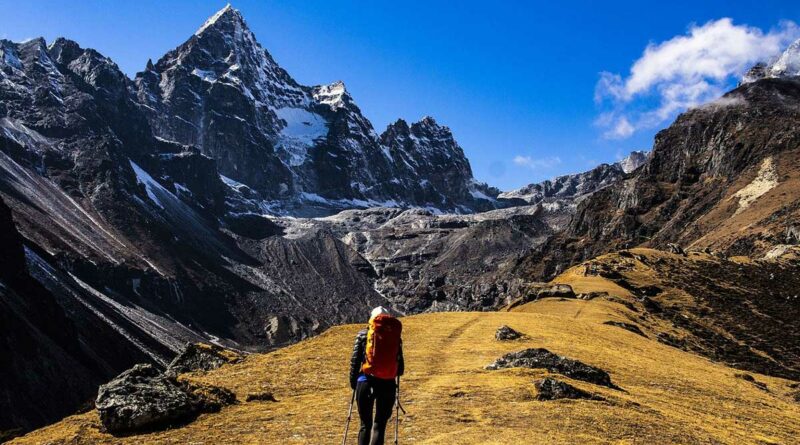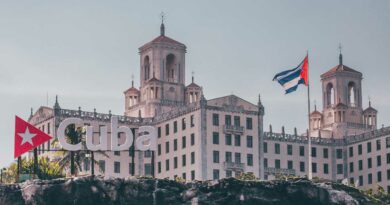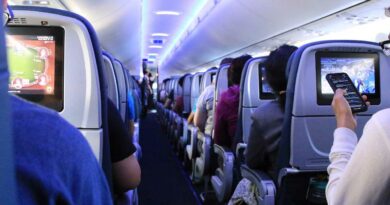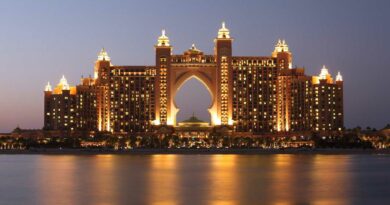7 Myths About Trekking In Nepal
The phrase “Trekking in Nepal” has become a popular meme on the one hand, and on the other hand, it has become a password-identifier in the “friend or foe” system for advanced tourists, who are ready for a long journey and parting with modern comfort for the sake of the aesthetics of mountain nature.
Today we are talking about myths when trekking in Nepal, keep reading:
It’s only for climbers
Trekking in Nepal is not an easy walk in the autumn park under the arm. But this is not a climbing climb for survival. Tracks around Annapurna and Everest base camp are held by both ten-year-old and European pensioners. Of course, the bulk of trackers are people 20-40 years old in average physical condition.
You don’t have to be a marathon or multi-racer to complete the track. An average physical form is enough, which can be gained in 2-3 months. We bought tickets to Nepal and immediately started swimming, running, doing fitness or cycling. Only three hours a week – anyone can allocate this time for themselves, even the President of the Galaxy. And then, you see – and after Nepal, continue to study. It is beneficial for your employer that you are forever chained to the workplace. And you benefit from being strong and healthy.
If you have a dream to see the dawn in the Himalayas, you can overcome any difficulties. The main thing is the goal, everything else will take care of itself.
When to go?
It’s simple – there are two main seasons: October-November and March-April-early May. Rainy in summer, very cold in winter. In autumn, the sky is clearer and hard-working Nepalese farmers harvest apples to celebrate the party. Everything blooms in spring (up to 3500 m) and the sky is foggier, but not always. For the trek to the Everest base camp, the best time is the May holidays. During this period, climbing expeditions rise along with ordinary trackers, the goal of which is the actual peak of Everest.
2. Expensive equipment
Equipment manufacturers would be happy to sell you $10,000 worth of merchandise, but this is not necessary for classic Nepalese tracks. You can equip yourself in different ways. There are quite budget options if you are not going to continue your hiking activity, but just want to try.
The most important piece of equipment is good trekking boots or trekking shoes (same but without ankle support) for $100-200. You must break in your shoes well at home, otherwise suffering and pain await you in the mountains. The cheapest way is to look for boots in a tourist store, and then order the same model on American sites. It will be 2-3 times cheaper.
Nepal has a gigantic counterfeit trekking equipment industry. And if you need something branded, there are four shops with licensed equipment in Kathmandu (The North Face, Marmot, Salewa, Lowe Alpine). Prices are lower than in the USA, Ukraine or Russia. High-tech items (boots, trekking poles, membrane jackets) are unrealistic for Nepalese to do on a par with official manufacturers. But simple equipment is quite possible to buy in Kathmandu, in the Thamel tourist reservation. From fake equipment, Canadian scientists recommend trekking socks, sunglasses, fleece jackets and pants, synthetic t-shirts, gas, sleeping bag insert, gloves. Trekking poles for $ 8-10 pair will do for one time. Just don’t take them apart too often. Once collected – and go the whole track.
You can’t take boots in Kathmandu, and you won’t have time to break them in before the track. It is better to buy sleeping bags at home, because Nepalese sleeping bags are giant monsters. There is one dirty trick – you cannot take a sleeping bag at all on the track around Annapurna, but buy a sleeping bag insert in Kathmandu instead. It weighs 100 g and costs $9. Use it for hygienic reasons, cover yourself with one or two blankets provided by the local Radisson.
3. Must carry a heavy backpack
If you properly pack your backpack, it will weigh 6-10 kg. This weight can be easily carried the entire route without particularly straining. In addition, you can hire a porter. This is especially recommended if you have no hiking experience and have little idea what it’s like to carry 10 kg in the mountains. You pay the porter his way to the track and back, as well as a salary of $15 per day. Porter carries up to 20 kilograms, usually it is taken for two participants. On the Annapurna trek, a porter costs $60 for his transport and $165 for labor (11 days * $15). Total – $ 225, for two it will be $ 112.5 each. And no problem – go light, carry water, a camera, sunblock and a hair straightener (optional). Porters pay for their accommodation and meals themselves at Nepalese tariffs (and not $5 per dish like the white misters). On the Everest base camp trek, porters are hired directly in Lukla, so they don’t have to pay for the road – only a salary.
4. You have to live in a tent
On popular tracks, no one has been doing this for a long time. Everyone spends the night in mountain hotels – lodges. This is not a Sheraton, but not some gloomy hangouts either. Houses made of brick or wood, double and triple rooms. No barracks with two-story bunks! The bathroom is inside the room, but most often it is shared. The room has everything that brave rogues need: two beds, a mattress, a blanket and a bed. These rooms are not heated, but you can often ask for a second blanket. Don’t panic – this shelter is better than a tent. Being there, you will understand that nothing else can be at such a height. The village has lodges of varying degrees of neglect and prosperity. We always choose the best offer on the rural real estate market.
5. Nowhere to wash
On the track around Annapurna, you have the opportunity to take a shower every day. According to statistics, no one does this only during an overnight stay at Thorung Fedi (height 4450 m). Well, it’s too cold. And so – at the beginning of the track, everyone is washed with hot water, which heats up in the sun (everything depends on the sun here). Then – for $ 1 they will heat a whole bucket of hot water for you. You won’t have to wash yourself in mountain streams with water with a temperature of +1.
6. Food on the fire
This element of camping romance is also missing. Every 3-5 hours on the route there are lodges, and in each of them there is a restaurant. Lodges earn not by paying for the night – it is quite symbolic. Their main income is the restaurant. One dish costs $3-6. What do they feed? Good news for vegetarians: there is no meat in the mountains. Only sometimes yak steaks for $10. And so – four pages of absolutely the same menu with dishes of rice, potatoes and pasta. There is also tuna, cheese and vegetables. They also make pretty good pizza. But the main symbol of trekking in Nepal is the national dish dhal baht (a shovel of rice with lentil soup, flatbread and pickled vegetables). Its secret and main attraction is that this food never runs out. Rice and vegetables will be carried to you until you beg for mercy.
During the trek, tired travelers will eat three times a day at local restaurants. These are not Michelin star establishments, but in general everything is quite tasty.
7. Mountain sickness is inevitable
If you do everything right, you are in no danger. Most people do this route without any problems. How does altitude sickness occur? From a sharp climb, the body ceases to have enough oxygen. In severe forms, this leads to hypoxia, which, in turn, leads to pulmonary edema or cerebral edema. And edema – to death, but this is in very rare cases.
Height must be gained gradually. After 3000 m you cannot gain more than 500 meters per day. During the night at a new height, the body adapts to new conditions and you can continue the journey.
Routes are built taking into account all these rules. None of the groups had altitude sickness. Symptoms of mountain sickness: severe headache, lack of air, sleep disturbances, fatigue, disorientation. The solution is to go down immediately. Reception Diamax (Russian analogue – Diakarb). This is the only altitude sickness medicine you will ever need. It can be bought in Kathmandu for $1-2. Usually, when resetting 400-500 meters, the situation stabilizes. Manang (3570 m) has a hospital with Western doctors, a pharmacy and an airport. Every day in Manang there is a free lecture on altitude sickness.




